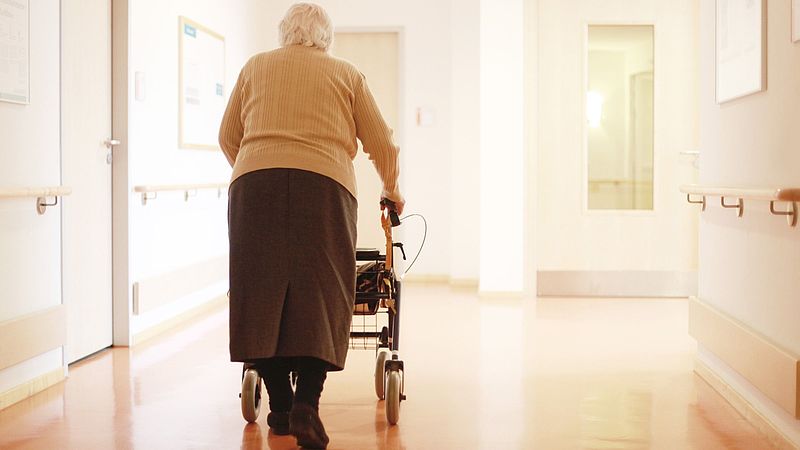Facts and figures about osteoporosis
Osteoporosis is a common disease: In Germany, 6.3 million people over the age of 50 are affected. Each year, 885,000 people develop the condition.1 One in four patients is female. The illness is often associated with spinal fractures: Studies confirm that the risk of a subsequent fracture increases by 3.2 times following the first vertebral fracture, 9.8 times after the second, and 23.3 times after the third.2

What lies behind osteoporosis and how you can get bone loss under control
With osteoporosis, the bones become porous and more fragile. Familiarise yourself with the bone loss clinical symptoms, find out why vertebral fractures can occur and what treatment options are available. To improve quality of life, not only exercise, diet and medications play a crucial role: find out how you can ensure greater mobility in everyday life by wearing a special back brace.
All about osteoporosis
Osteoporosis self-help groups near you
To mark World Osteoporosis Day, in addition to the International Osteoporosis Foundation and the national medical specialist associations, self-help groups also invite people to attend information events. Find your local osteoporosis self-help group and the right medical supply store here.
Find a self-help group near youBiofeedback, diet and exercises – further information

The Spinomed back orthoses - for less pain and more mobility in everyday life
The three spine-straightening back orthoses Spinomed®, Spinomed® active und Spinomed® active men have been specially designed for use in (stable) osteoporotic vertebral fractures. They strengthen the muscles, straighten the upper body and have a quick and lasting effect.3,4,5
The strengthening effect begins on the very first day.
Products for osteoporosis
Sources
1 Hadji P et al. Epidemiologie der Osteoporose: Bone Evaluation Study. Eine Analyse von Krankenkassen-Routinedaten. Deutsches Ärzteblatt Int 2013;110(4):52–57
2 DVO. Prophylaxe, Diagnostik und Therapie der Osteoporose bei postmenopausalen Frauen und bei Mannern ab dem 50. Lebensjahr 2023. Online veröffentlicht unter: https://register.awmf.org/de/leitlinien/detail/183-001 (Letzter Zugriff 28.11.2023).
3 Pfeifer M et al. Effects of a New Spinal Orthosis on Posture, Trunk Strength, and Quality of Life in Women with Postmenopausal Osteoporosis: A Randomized Trial Am J Phys Med Rehabil 2004;83(3):177–186.
4 Hettchen M et al. Effects of the “Spinomed active” orthosis on chronic back pain in kyphotic women with osteoporotic vertebral fractures three months and older: A randomized controlled study. Front. Pain Res. 3:1038269.
5 Genest F et al. Feasibility of simple exercise interventions for men with osteoporosis - A prospective randomized controlled pilot study. Bone Rep. 2021;15:101099.







